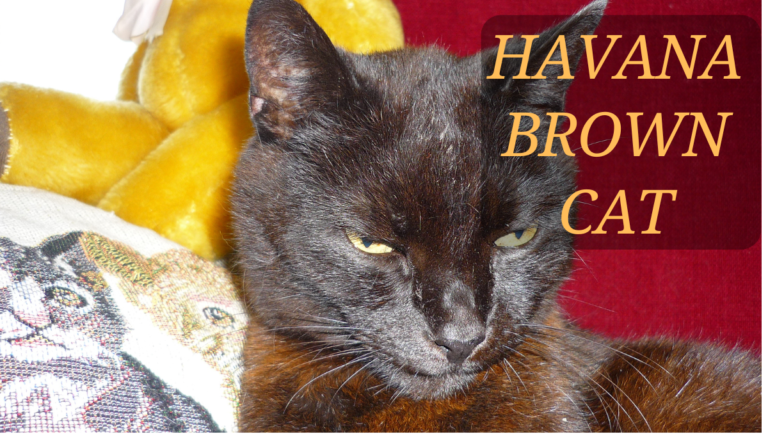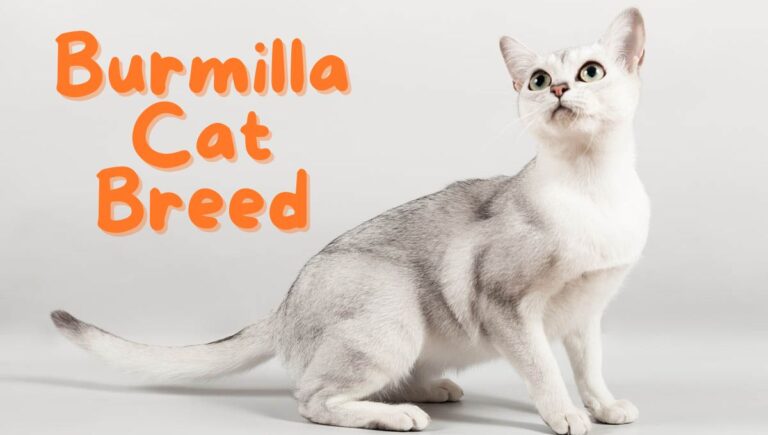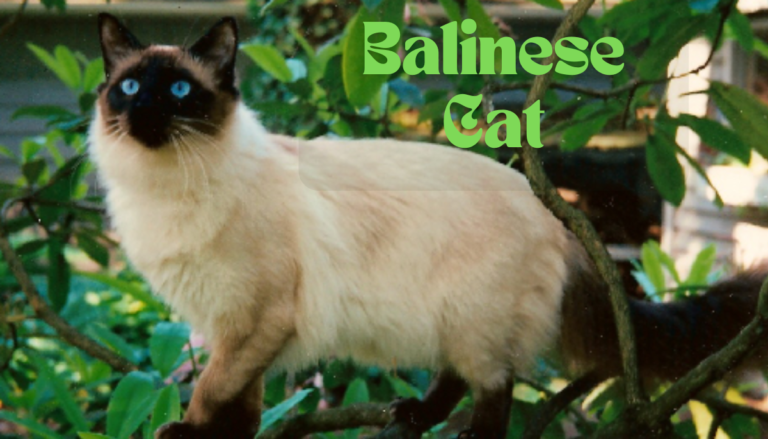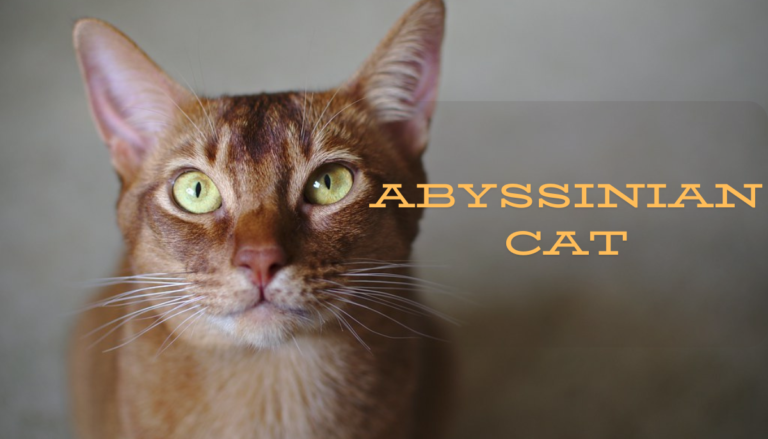German Rex Cat Breed
The German Rex is a captivating breed that stands out in the feline world. Originating from Germany, this breed’s name reflects its distinctive curly coat reminiscent of the rex mutation found in various animals. The German Rex is a medium-sized cat, known for its slender legs and round head with well-developed cheeks and large, open ears.
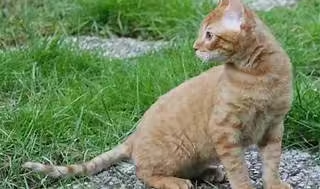
What truly sets the German Rex apart is its silky, short, and naturally curly coat, which lacks guard hairs, giving it a unique texture and appearance. These cats are often described as the “Einsteins of the cat world” due to their high intelligence. They are playful, friendly, and loyal, thriving on human interaction and affection. Their sociable nature makes them family-friendly companions who get along well with other pets, including cats and well-behaved dogs.
The German Rex’s playful and intelligent demeanor is matched by its athletic build, allowing it to maintain an ideal weight with sufficient exercise. This breed’s history is as intriguing as its personality, with its roots tracing back to a rescue cat named Lammchen from the ruins of East Berlin after World War II. Today, the German Rex remains a rare gem in the cat world, cherished for its loving nature and striking looks.
Table of Contents
II. Origin and History of German Rex cat breed
The German Rex cat breed, with its unique curly coat, is a marvel of feline genetics and a testament to the diversity within domestic cats. This breed’s history is not just about its physical characteristics but also the cultural and geographical influences that have shaped it.

A. The Origins of the German Rex
The German Rex’s story begins in the 1950s in East Berlin, where a doctor named Rose Scheuer-Karpin discovered a black, curly-coated feral cat in the Hufeland Hospital garden. This cat, named Lämmchen, or “little lamb,” became the matriarch of the breed. Her offspring with a stray tom led to the propagation of the rex mutation, characterized by the absence of guard hairs, giving the coat a soft, curly texture.
(1) Historical Significance
The German Rex breed was officially recognized in the 1930s. It quickly gained attention for its distinctive wavy coat, initially bred for its exceptional fur, setting it apart from other feline breeds. The breed’s development was further influenced by crossbreeding with European Shorthairs and mixed breeds to enhance genetic diversity and refine the rex mutation.
(2) Geographical Influence
Originating in Germany, the breed’s development was influenced by the temperate European climate, contributing to its medium-sized build and well-developed cheeks. The geographical region of origin played a significant role in the breed’s physical and behavioral traits, adapting them to a moderate climate and urban environment.
(3) The Breed’s Characteristics Today
Today, the German Rex is known for its playful, friendly, and intelligent nature. It is a family-friendly breed that enjoys human interaction and is compatible with other pets. The breed’s origin has influenced these characteristics, with its European roots contributing to its sociable and adaptable nature.
(4) Folklore and Legends of the Maine Coon
While the German Rex has a clear lineage, the Maine Coon’s history is shrouded in folklore. One legend suggests the breed is a hybrid between a raccoon and a cat, which, while biologically impossible, reflects the breed’s bushy tail and robust nature. Another tale involves Marie Antoinette, whose long-haired cats were said to have been sent to America, where they interbred with local cats to become the Maine Coon.
III. Physical Characteristics of German Rex cat breed
Here is a detailed table showcasing the physical characteristics of the German Rex cat breed:
| Characteristic | Detail |
|---|---|
| Height | 10″-12″ |
| Weight | 6-10 pounds |
| Life Span | 12-15 years |
| Good With | Families, singles, seniors, apartments, houses with/without yards |
| Temperament | Playful, friendly, loyal, family-friendly |
| Intelligence | High; often nicknamed the “Einsteins of the cat world” |
| Shedding Amount | Low; due to the absence of guard hairs |
| Grooming | Low; their curly coat is easy to maintain |
| Exercise Needs | Moderate; they are an athletic breed that maintains ideal weight with regular activity |
| Energy Level | High; they are playful and enjoy interactive play |
| Drool Amount | Not known |
| Coat Length/Texture | Short, silky, and tends to curl; whiskers also curl, though less strongly than in the Cornish Rex |
| Colors | White, Blue, Black, Cream, Red, Brown, Frost, Platinum, Fawn, Chocolate, Chestnut, Cinnamon, Lavender, Champagne, Seal |
| Patterns | Solid colors, tabby, and tortoiseshell |
The German Rex is a breed that combines a striking appearance with a delightful personality. Their unique coat, which lacks guard hairs, gives them a soft, curly texture that is not only beautiful but also low maintenance. These cats are known for their intelligence and playful nature, making them excellent companions for a variety of households. With their moderate exercise needs and high energy levels, they are sure to bring joy and liveliness to any home. The range of colors and patterns they come in adds to their charm, making each German Rex cat a unique work of art.

B. German Rex Cat Breed: A Comprehensive Guide
(1) Size and Measurements
The German Rex is a breed that exudes elegance in a compact form. Adult males typically weigh between 7 to 10 pounds, while females are slightly lighter, usually ranging from 5 to 8 pounds. In terms of height, they stand at about 10 to 12 inches.
(2) Coat Type and Texture
The coat of the German Rex is where it truly shines. It is short, silky, and curls naturally, a result of the breed’s unique genetic makeup. The absence of guard hairs gives the coat a plush feel, inviting to the touch.
(4) Color Variations
German Rex cats come in an impressive palette of colors. Common hues include white, black, blue, red, cream, brown, cinnamon, fawn, chocolate, and more. This variety allows for a multitude of unique appearances within the breed.
(5) Weight Ranges
A fully grown German Rex cat might weigh between 6-10 pounds or more, with the breed generally appearing larger due to their long legs. The weight can vary slightly based on diet and activity level.
(6) Coat Length
The coat length of the German Rex is uniformly short across the body. The lack of an undercoat means that the coat is less prone to matting and easier to maintain.
(7) Common Color Patterns
The German Rex’s coat can display a range of patterns, adding to the breed’s allure. Patterns include solid, bicolor, calico, ticking, tabby, shaded, pointed, smoke, and tortoiseshell. Each pattern offers a different aesthetic, making every German Rex cat distinct.
C. Distinctive Features of the German Rex Cat Breed
The German Rex cat breed is adorned with several distinctive features that not only set it apart from other breeds but also contribute to its striking appearance and agile nature.
(1) Ears
One of the most notable features of the German Rex is its large, open ears. Set high on the head, these ears give the breed an alert and intelligent expression. The size and shape of the ears are not just for show; they enhance the cat’s auditory capabilities, allowing it to pick up on subtle sounds that might go unnoticed by humans.
(2) Eyes
The eyes of the German Rex are medium-sized and oval-shaped, often appearing larger due to their prominent positioning on the face. The eye colors are typically green or gold, complementing the various coat colors and patterns. These expressive eyes are a window into the cat’s playful and affectionate soul.
(3) Tail
The tail of the German Rex is medium in length and well-covered with fur, echoing the breed’s overall plush and curly coat. It is an extension of the cat’s expressive body language, often seen curling and twitching during play or when the cat is deep in thought.
(4) Coat
The German Rex’s coat is perhaps its most unique physical trait. Lacking guard hairs, the coat is silky, short, and curls naturally. This unusual coat structure not only gives the breed its characteristic look but also makes it a delight to pet. The whiskers of the German Rex also curl, though less strongly than the coat, adding to the breed’s endearing charm.
(5) Build
In addition to their unique coat, German Rex cats have a slender and muscular build, with long, slender legs that give them a graceful and agile physique. This build allows the German Rex to move with elegance and grace, whether it’s leaping after a toy or simply strutting around its domain.
(6) Unique Physical Traits
The combination of the German Rex’s large ears, expressive eyes, medium-length tail, and distinctive coat creates a breed that is not only beautiful but also full of personality. These cats are known for their intelligence, playfulness, and affectionate nature, making them perfect companions for those who appreciate a cat with both looks and brains.

In summary, the German Rex cat breed stands out with its distinctive features that are not only aesthetically pleasing but also contribute to the breed’s health and behavior. From the tips of their large ears to the end of their plush tails, German Rex cats are a breed that embodies beauty, intelligence, and affection.
IV. Temperament and Personality of the German Rex Cat Breed
The German Rex cat breed is celebrated for its endearing temperament and distinctive personality traits. These cats are often lauded as the “Einsteins of the cat world” due to their remarkable intelligence and engaging nature. They exhibit a friendly and sociable demeanor, making them excellent companions for a variety of owners.
(1) General Demeanor
German Rex cats are known for their playful, friendly, and loyal personalities. They crave human interaction and are quick to form strong bonds with their family members. Their sociability isn’t limited to humans; they generally get along well with other pets, including cats and dogs, making them a versatile addition to any household.
(2) Positive Behavioral Traits
One of the most positive aspects of the German Rex’s behavior is their affectionate nature. They enjoy cuddling and will often seek out the laps of their favorite humans for comfort and warmth. Their high intelligence makes them highly trainable, capable of learning tricks and enjoying interactive play, which can provide endless entertainment for their families.
(3) Challenging Behavioral Traits
However, their intelligence can also pose challenges. German Rex cats require mental stimulation to prevent boredom, which can lead to mischievous behavior if not properly managed. Without sufficient interaction and play, they may engage in attention-seeking behaviors or become troublesome.
(4) Managing Breed-Specific Behavior Issues
To address these potential issues, it’s important to provide a variety of toys and activities to keep the German Rex mentally stimulated and physically active. Puzzle toys, interactive play sessions, and training exercises can help keep their minds engaged. Ensuring they have a comfortable space to retreat to can help manage any stress or anxiety. Regular exercise is also crucial for maintaining their ideal weight and preventing any destructive behavior due to pent-up energy.
V. Care and Maintenance of the German Rex Cat Breed
A. Grooming Needs
The German Rex cat breed, with its unique curly coat, requires a specific grooming approach to maintain its distinctive appearance and ensure the cat’s comfort and health.
(1) Coat Care
The German Rex’s coat is unusual because it has no guard hairs, which means their fur, including their whiskers, is naturally curly. This low-maintenance coat is silky soft and requires little grooming. A quick brushing once a week should suffice to keep their coat in good condition.
(2) Hygiene
Regular grooming is essential for maintaining the German Rex’s unique coat texture and preventing matting. Their curly fur can be more prone to dryness, so it’s important to use a high-quality moisturizing shampoo and conditioner when bathing your cat.
(3) Grooming Tips
- Brushing Frequency: Brush your German Rex once a week to remove loose hair and prevent matting.
- Grooming Tools: Use a slicker brush or grooming mitt and brush in the direction of hair growth. A deshedding tool can also be used to remove loose hair and minimize shedding.
(4) Bathing
The German Rex does not require frequent baths, but if they get into something dirty or smelly, a bath may be necessary. Use a gentle cat shampoo and ensure to rinse thoroughly.
(5) Nail Trimming
Regular nail trimming is important to prevent overgrowth and reduce the risk of injuries. Use a pair of cat nail clippers and be cautious not to cut too close to the quick.
(6) Ear Cleaning
Clean your cat’s ears regularly to reduce wax and debris accumulation, which can contribute to better overall ear health and reduce the risk of infections.
(7) Dental Care
Maintain your German Rex’s dental hygiene by brushing their teeth with cat-specific toothpaste to reduce plaque and tartar buildup.
In addition to grooming, German Rex cats are intelligent and require mental stimulation. Provide them with plenty of toys, such as puzzle games and interactive playthings like feathered wands, to keep them engaged and prevent boredom.
B. Health consideration
The German Rex, with its plush curly coat and engaging personality, is generally a healthy breed. However, like all cats, they may be prone to certain genetic conditions. Regular veterinary check-ups are essential to monitor for signs of discomfort or illness.
(1) Common Health Problems:
- Yeast Infections: Their unique coat may require extra skin care to prevent issues.
- Dental Problems: Regular dental care is crucial due to their predisposition to dental issues.
- Hypertrophic Cardiomyopathy (HCM): While not specifically linked to German Rexes, this heart condition is common in closely related breeds and may affect them.
(2) Preventive Measures:
- Diet: A balanced diet helps maintain proper weight and overall well-being.
- Behavior Monitoring: Changes in behavior or appetite can indicate health problems; early detection is key.
(3) Veterinary Care:
- Yearly wellness visits are recommended to keep your German Rex healthy. Your vet can help develop a care routine tailored to your cat’s needs.
(4) Lifespan:
- The average lifespan of a German Rex is 12-15 years.
(5) Promoting a Longer Life:
- Proper Feeding: Ensure a high-quality diet with adequate protein.
- Regular Grooming: Brush their coat weekly to prevent matting and promote healthy hair growth.
- Mental Stimulation: Engage them with interactive play to keep them mentally stimulated.
By adhering to these guidelines, you can help ensure your German Rex enjoys a long, healthy, and happy life. Remember, a proactive approach to their health can make all the difference.
C. Nutrition
Proper nutrition is pivotal for the health and well-being of a German Rex cat. These cats do not have special dietary needs and can be fed like any other feline, thriving on a diet that includes both dry and wet cat food to ensure they get plenty of protein.
Dietary Recommendations:High-Quality Diet: Opt for high-protein cat food with real fish or meat as the first ingredient.
Size and Activity Level: Adjust the amount of food based on the cat’s size, age, and activity level. Active cats may require more calories.
Dietary Restrictions or Allergies:D. Exercise
The German Rex is an active breed that thrives on play and interaction. To keep your German Rex healthy and content, incorporate a mix of exercises that cater to their agility and intelligence.
(1) Types of Exercise:
- Interactive Play: Use toys like feathered wands, mouse toys, or laser pointers to engage your cat in chase and pounce activities.
- Climbing: Install cat trees or shelves to encourage climbing, which is a natural behavior for cats and provides great physical exercise.
- Agility Training: Set up a mini agility course at home with tunnels and jumps to stimulate their mind and body.
(3) Duration and Frequency:
- Aim for at least 15-30 minutes of interactive play each day, broken into two sessions to keep their interest peaked.
- Encourage climbing and exploration throughout the day by creating an environment with varying heights and hiding spots.
(4) Breed-Specific Exercise Needs:
- The German Rex’s high energy levels mean they will often expend energy on their own, but they still benefit greatly from structured playtime with their owners.
- They enjoy learning new tricks, so consider clicker training or teaching them to fetch as part of their exercise routine.
Regular exercise will not only keep your German Rex physically fit but also provide mental stimulation, preventing boredom and potential behavioral issues. Always ensure fresh water is available after play sessions to keep them hydrated.
VI. Suitability for Families and Other Pets to German Rex Cat Breed
A. Compatibility with Children and Other Animals
The German Rex cat breed is known for its friendly and sociable nature, making it an excellent companion for families with children. These cats often form strong bonds with their humans and are happiest when they can spend time with their families. They are also known for their playful nature and tolerance for gentle handling, which makes them patient around young family members.
Interactions with kids are generally positive, as the German Rex enjoys playtime and can become instant play buddies with children. However, it’s important to ensure early socialization takes place, boundaries are properly set on both sides, and interactions between kids and cats are supervised.
When it comes to other household pets, the good-natured German Rex fares well with many domestic animals. They are known to be confident and assertive, and with proper introduction, they can integrate into a multi-pet household. They tend to get along well with other cats and even dogs when properly introduced.

B. Special Considerations for Multi-Pet Households
For multi-pet households, it’s crucial to introduce the German Rex to existing pets gradually. Supervised interactions are recommended, especially during the initial meetings. It’s important to allow each pet to have its own space and to introduce them to each other’s scents before face-to-face meetings.
If you plan to introduce your German Rex into a household with dogs, ensure that your dog is socialized to cats, as initial aggressive behavior can be hard to undo. For households with small birds, mammals, or fish, it’s important to supervise interactions, as the German Rex’s playful and high-energy nature may pose a danger to smaller pet.
C. Environment Needs
The German Rex is generally an adaptable breed of cat, although they favor warmer temperatures. Ensure that there’s enough shade and fresh water available during the hotter months. These cats thrive in an active environment where they can satisfy their curious nature and exhaust their energy.
German Rexes are high-energy cats that need a lot of exercise. They love to climb and jump, so providing good climbing trees and various types of toys, including interactive toys that let you socialize with them, is beneficial. They do not require a special environment but do appreciate a space where they can explore and play.
VII. Adoption and Breeder Considerations for the German Rex Cat Breed
A. The Benefits of Adoption
Adopting a German Rex cat from a shelter or rescue organization is a compassionate choice that offers numerous benefits. Not only does it give a cat a second chance at life, but it also makes room for other animals in need. Adoption can save shelter cats from euthanasia and inspire others to adopt as well. Adopted cats are often already socialized, vaccinated, and ready to become a part of your family. By choosing adoption, you contribute to the fight against animal overpopulation and support local shelters and rescues.
B. Choosing a Reputable Breeder
If you decide to purchase a German Rex kitten, it’s crucial to select a reputable breeder. A responsible breeder will prioritize the health and temperament of their cats, conduct necessary health screenings, and provide a nurturing environment. They should be transparent about the kitten’s medical history and willing to answer all your questions. Ethical breeding practices are essential for the well-being of the cats and to ensure that you bring home a healthy and happy companion.
C. Financial Considerations
The cost of adopting or purchasing a German Rex cat can vary. Adoption fees typically cover initial veterinary care, including vaccinations and spaying/neutering. When purchasing from a breeder, prices for a German Rex kitten can range from $500 to $1,000, reflecting the breed’s rarity and the care invested in raising them5. It’s important to consider the long-term financial commitment as well, which includes food, litter, toys, and ongoing veterinary expenses.
VIII. Conclusion: Embracing the German Rex Cat Breed
A. The Essence of the German Rex
The German Rex cat breed, with its origins in Germany, is a medium-sized feline known for its playful, friendly, and loyal temperament. These cats are highly intelligent, often referred to as the “Einsteins of the cat world,” and they exhibit a sociable nature that makes them excellent companions. Their defining characteristics include a unique curly coat, medium size, and a muscular build, which contribute to their overall charm and appeal.

B. The Path to Responsible Ownership
Prospective owners should understand the importance of responsible ownership and proper care. German Rex cats require a high-quality diet, regular grooming, and plenty of mental and physical stimulation to thrive. They are generally healthy, but like any breed, they can be prone to certain health issues, so regular veterinary check-ups are essential.
Before welcoming a German Rex into your home, consider their need for attention and interaction. Ensure you have the time and resources to provide them with the care they deserve. Remember, adopting a pet is a long-term commitment that should not be taken lightly.
In summary, the German Rex cat is a delightful breed that can bring joy and companionship to the right home. By considering all aspects of their care and committing to responsible ownership, you can ensure a happy and fulfilling life for your German Rex companion.
FAQ’s about German Rex
Are German Rex cats hypoallergenic?
While no cat is completely hypoallergenic, German Rex cats are often tolerated by individuals with allergies due to their low-shedding coat
Do German Rex cats require special grooming?
German Rex cats require regular brushing to prevent matting and keep their coat in good condition. Despite their curly fur, they do not need professional grooming.
Are German Rex cats suitable for families with children?
Yes, German Rex cats are known for their friendly and sociable nature, making them suitable for families with children. They enjoy playtime and can be patient with gentle handling.
How do German Rex cats interact with strangers?
German Rex cats are generally friendly and may approach strangers with curiosity. However, like all cats, individual personalities can vary, and some may be more reserved
Can German Rex cats be trained to walk on a leash?
Yes, with patience and positive reinforcement, German Rex cats can be trained to walk on a leash. This can be a great way for them to explore safely outdoors

